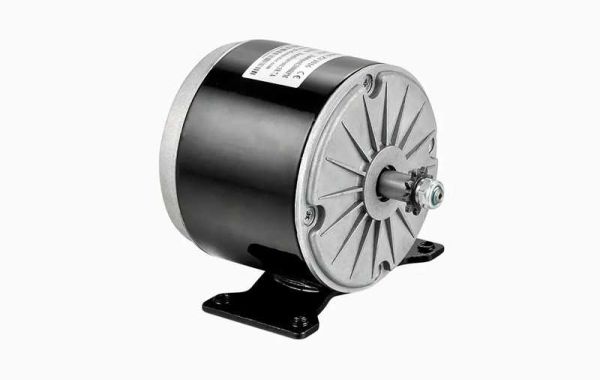What is the Chargemaster?
The hospital chargemaster is a list of all the billable services and items to a patient or patient’s health insurance provider.
The chargemaster lists the costs of each product and service offered by the healthcare organization, including any procedures, services, supplies, prescription drugs, and diagnostic tests provided by the hospital. The chargemaster lists the cost of everything related to that service, including any equipment fees and room charges.
When a patient receives service from a hospital, the healthcare provider documents the encounter in the medical record. Then hospital staff – like professional coders – assign the service a code for reporting and claim submission.
The codes are sent to the chargemaster. Each code is matched with a specific product or service and a fixed rate. Then, the charges are billed to the patient, creating a claim for payers – like insurance companies – to pay.
What’s Included in the Chargemaster?
Hospitals use chargemasters to keep track of the cost of all products and services offered by the organization.
Each product or service offered by the hospital – like a diagnostic test or specific surgery – gets its own entry in the chargemaster.
Each chargemaster entry includes the following:
Item Number: This number is assigned by the facility and is unique to that product or service.
CPT or HCPCS Codes: Current Procedural Terminology (CPT) codes or Healthcare Common Procedure Coding System (HCPCS) codes help keep track of each product or service in a standardized way.
Item Description: Each entry has a brief text description of the product or service.
Revenue Code: A unique code based on the revenue of that item.
Charge Amount: The fee assigned to the item.
Alternative CPT or HCPCS Codes: Sometimes, codes overlap. Or, some insurers may require additional codes.
Numeric Designation for Department: A unique code describing the department where the product or service took place.
Ledger Number: A general number for organization accounting purposes.
A hospital may offer thousands of products or services. There’s a chargemaster entry for each one.
Patients Rarely Pay the Chargemaster Rate
Healthcare transparency battles raged throughout 2019. In response, some organizations are making chargemasters more transparent.
However, it’s easy for patients to get confused about chargemaster prices. The prices displayed on the chargemaster are rarely the prices paid by customers.
In fact, most patients do not see the chargemaster price from their hospital visit unless they are uninsured and must actually pay the chargemaster rate.
Why are chargemaster rates so different from real prices? It’s because of markups.
Chargemaster services are heavily marked up to make negotiations with insurance companies easier. One recent study found that the average hospital in the United States had a charge-to-cost ratio of 4.32, which means the hospital charged $432 when the service really only cost $100.
Maintaining marked up chargemaster prices also makes it difficult for patients to compare prices between organizations.
Hospitals defend this practice, claiming that markups help hospitals stay open and competitive. However, there’s been a push for transparency in recent years, and hospitals have started changing how they treat the chargemaster.
Why is Inadequate Chargemaster Maintenance a Problem?
Inadequate chargemaster maintenance is a serious issue. Even the best healthcare organizations experience chargemaster-related issues, and these issues lead to lost revenue.
Accurate chargemaster maintenance is crucial for revenue integrity. A lack of maintenance leads to revenue leakage.
Poor chargemaster maintenance can lead to overpayments or underpayments. It can also lead to claim rejections from insurance companies, poor patient experience, or compliance violations.
Many organizations are surprised to discover they have been significantly undercharging or overcharging for specific treatments because of poor chargemaster maintenance. A chargemaster audit can reveal surprising results.
Tips for Maintaining Accurate Chargemasters
Hospital chargemaster maintenance is crucial to revenue cycle management. Here are some tips to help your organization manage.
First, the American Academy of Professional Coders (AAPC) recommends maintaining chargemaster lists by following the three C’s: correct, complete, and compliant codes.
Correct Codes: Chargemaster coordinators should check that the correct codes are billed. There may be differences between what is captured in the order entry system or EHR and what is reported on the chargemaster. Someone may assign an unlisted HCPCS code when a specific code is available, for example, or the entry may be missing HCPCS codes for separately paid drugs.
Complete: Chargemaster code sets need to be complete. Hospitals need to capture the charges for all the services and items provided to patients. Failure to maintain complete code sets can lead to missed payments and revenue leakage.
Compliant: Chargemasters must also be complaint with coding standards and federal, state, and commercial payer rules. Failing to adhere to regulations can lead to significant issues, including repayments to payers, healthcare fraud, and healthcare abuse.
Ultimately, all of these issues can be solved with frequent chargemaster code reviews. Check your chargemaster code to ensure it’s correct, complete, and compliant to ensure good revenue cycle management.
Visit https://hmi-corp.com/what-role-does-a-hospital-chargemaster-play-in-revenue-cycle-management/








